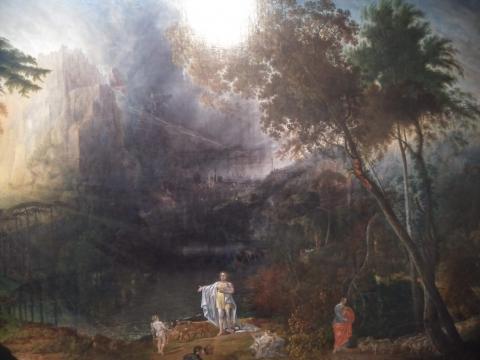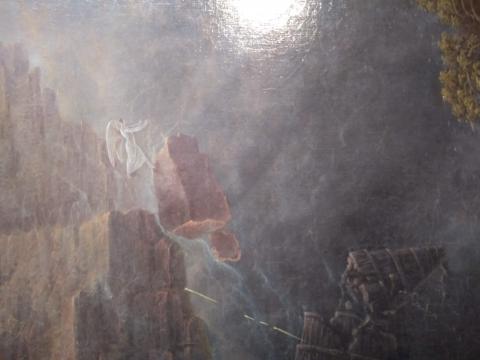The Coming Messiah and Destruction of Babylon (1832)

The Coming of the Messiah and the Destruction of Babylon is not, I think, one of Samuel Colman’s best works, nor is it one of his best named. In fact, I’ll go the whole hog and say I don’t think it is terribly well painted, either. Why then do I write about it? Though relatively poorly executed, its theme is of the greatest import. It thrice shows the person of Christ- as an infant (both laying and leading lions), a shepherd with His flock and as the triumphant Serpent Crusher.

Before him kneels a king who removes a crown that looks remarkably like St Edward’s, and in the background, a white angel begins the job of destroying Babylon, that symbol of human pride and pagan idolatry, by daintily toppling a mountain top, redolent of Daniel chapter 2 verse 45. In the one picture, Colman successfully depicts Christ’s coming, work and apocalypse. We currently live in that period of history between His finished work (death, resurrection and Pentecost) and His impending judgement (His return completion of the kingdom).

Like many faithful preachers and their roughly constructed sermons, the truth is often told through humble and imperfect means. This might not be Colman’s best work, but its message (‘submit to Christ while there is time’) is the most relevant one you will read today.
- Log in to post comments


 Sunday Worship 10.45am & 6.00pm
Sunday Worship 10.45am & 6.00pm